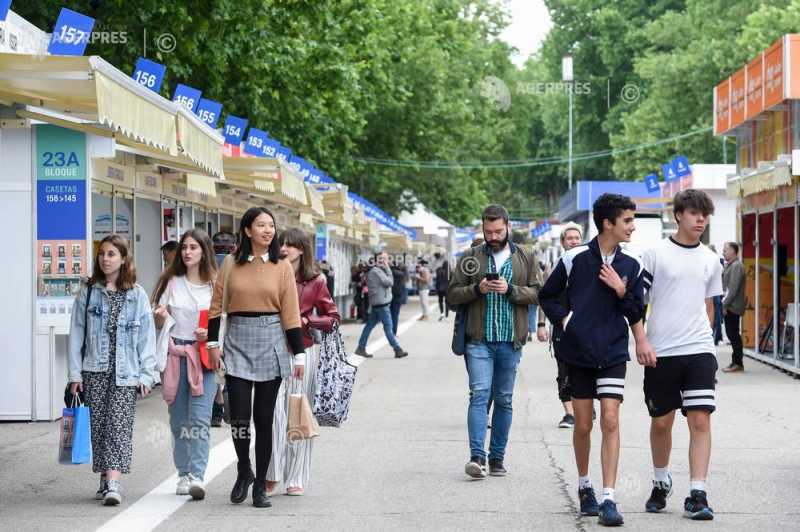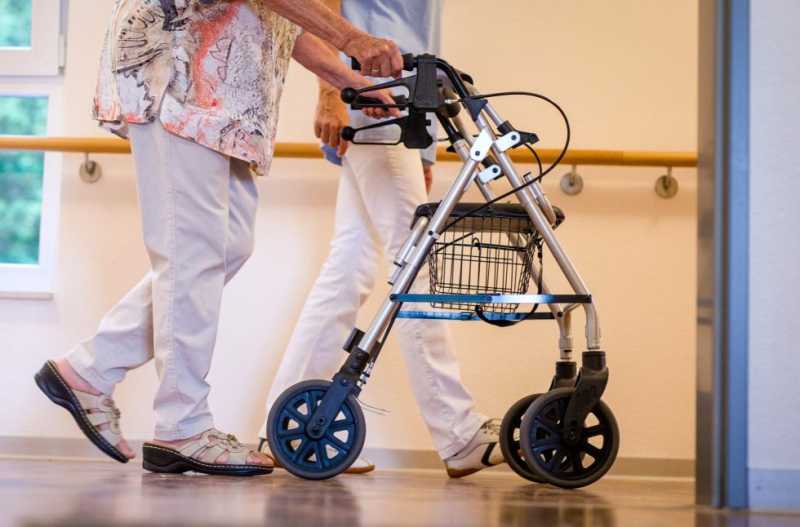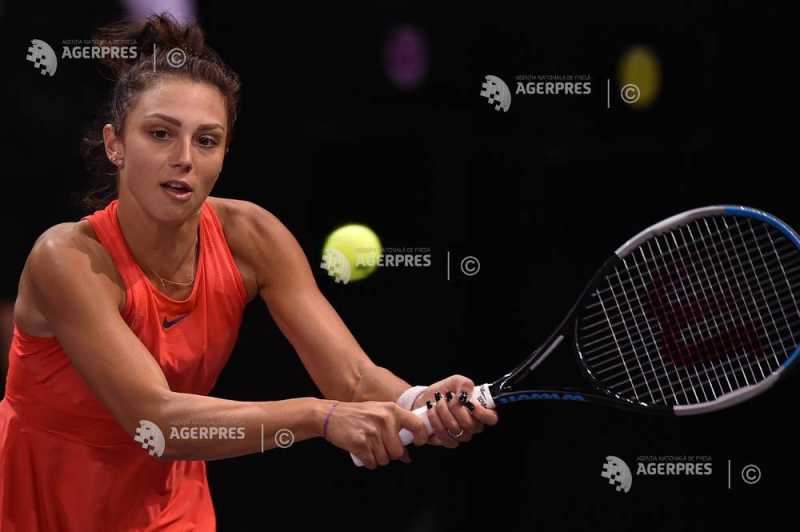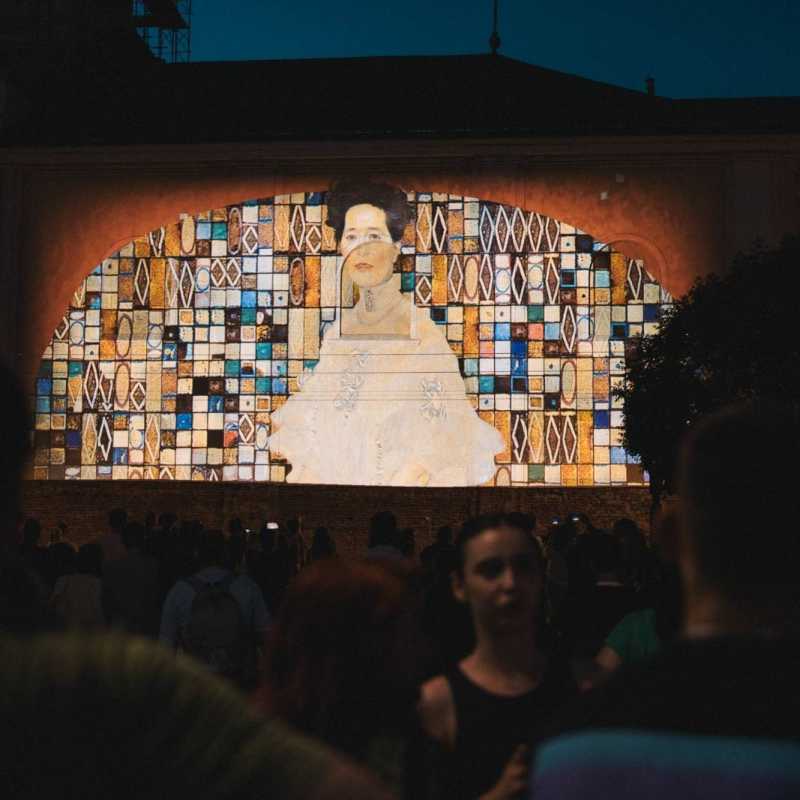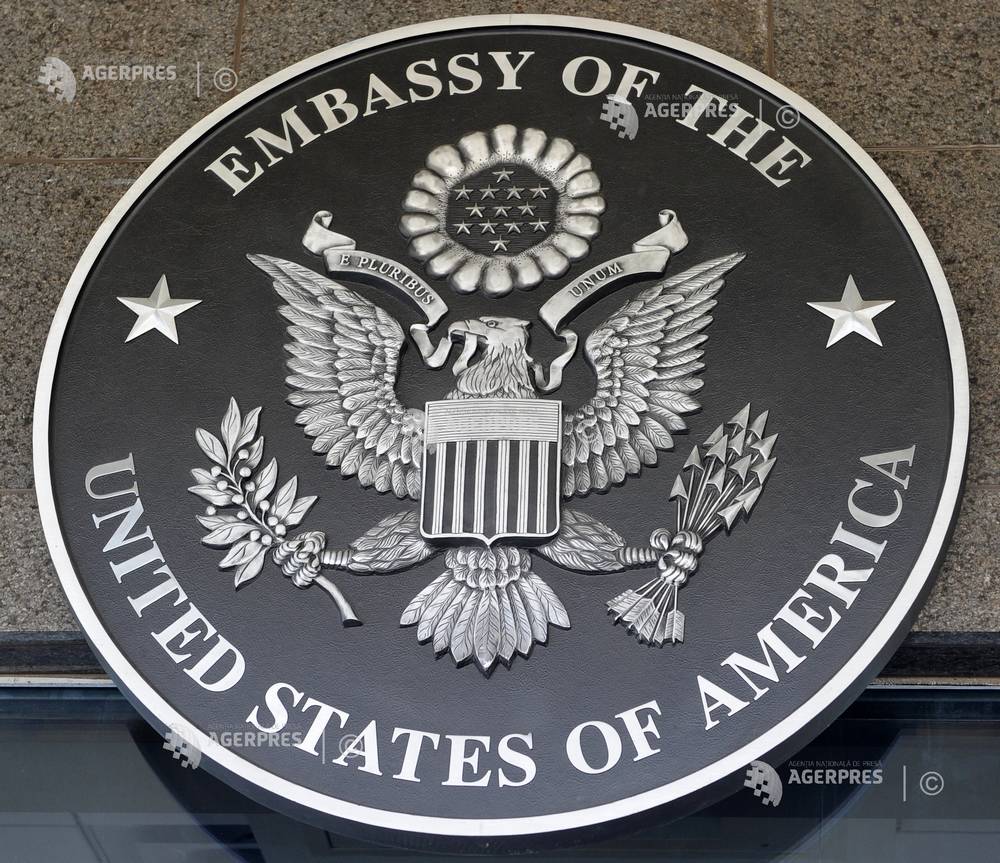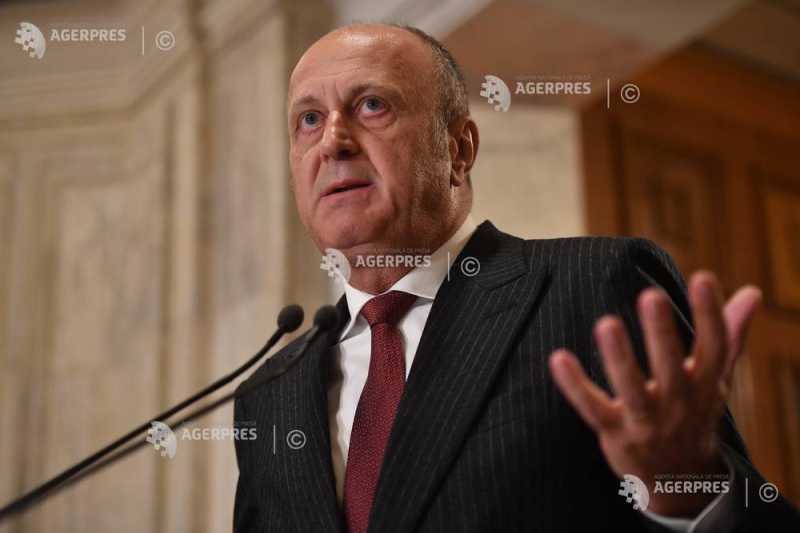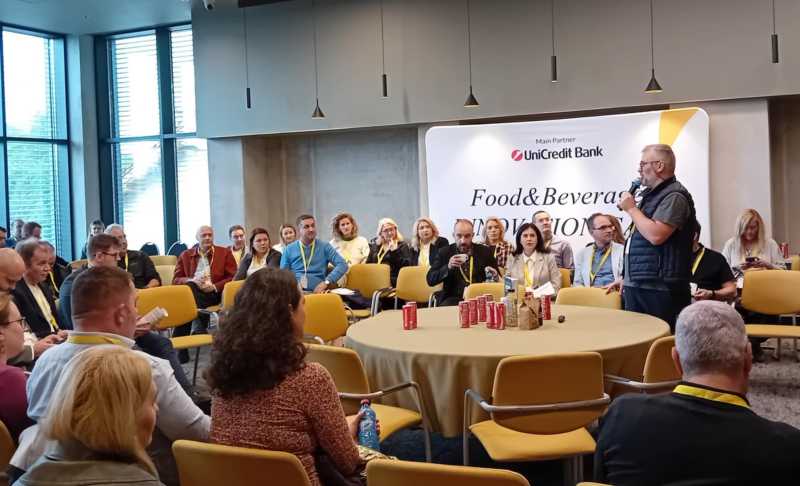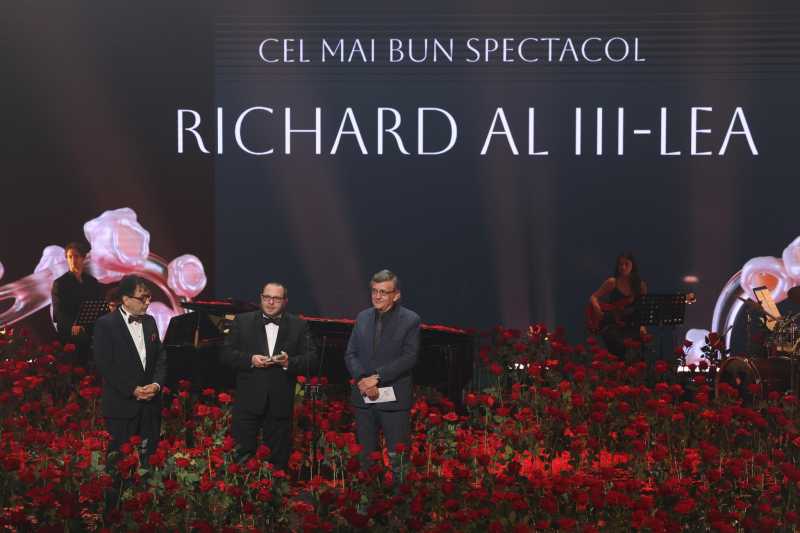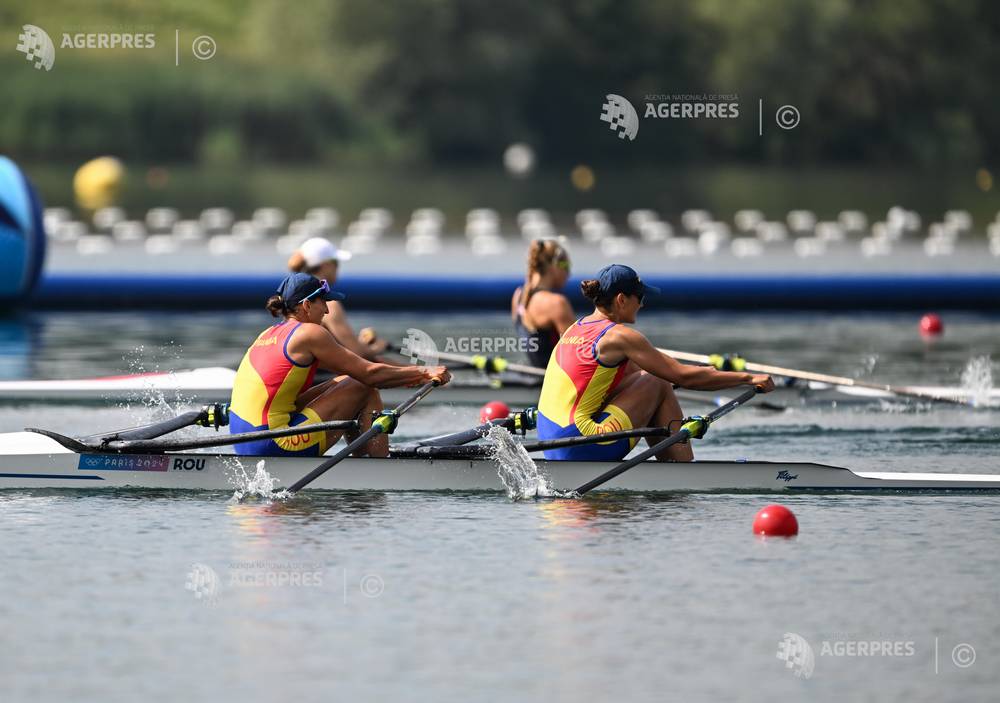Father Cringasu: The National Cathedral is monumental for unique occurrences in the history of its construction

The National Cathedral is monumental also for the unique occurrences in the history of its construction, says Father Nicolae Cringasu, coordinating patriarchal councillor at the Monuments and Church Constructions of the Romanian Christian Orthodox Patriarchate, who confessed that he permanently felt, during the execution of the works, 'the hand of God building His house.'
On Tuesday, after mounting the cross on the large cupola of the National Cathedral, the priest gave AGERPRES details about the works being carried out on this edifice.
'Mounting the cross - seven metres high and weighing seven tonnes - on the large cupola, was now done for reasons of organising the technological-engineering flow throughout the site, especially works above the plus 45 level, which is the level of the Cathedral nave. (...) The tower crane that we had until the other day would not allow mounting the cross, because, in rotation, it would have collided with it. The other day, according to the graphs, with the 650-ton crawler crane we dismantled the former tower crane, and we lifted and mounted the cross on the large cupola in position,' explained the coordinator of the work team on the construction site of the National Cathedral.
The cleric said that all the crosses on the towers of the National Cathedral were manufactured in Germany.
'They were made by the Strassacker company, and they had an engineering, so to speak, professional, special approach. The doors to the cathedral, 27 large bronze doors, were made by the same company. After I had, the opportunity to try about 10 or 12 companies in Austria and Germany, I chose this one. From the beginning I want to tell you that both the crosses and the doors were designed and executed with a lot of responsibility and respect, so to say, for Romanian Christian Orthodoxy in that everything I asked of them they did. I felt that they did so, as if from the bottom of their heart and with the desire to offer us the best product in terms of engineering quality,' said Father Cringasu.
For those who are involved in building the cathedral, mounting the cross on the Pantocrator Cupola is, first of all, a joy, for placing the 'Holy Cross in its place, in the highest place of the church, as it should be.'
'Secondly, it marks the end, to a very large extent, of the works in the air, which are more difficult to execute than those on the ground. Tuesday inaugurated a stage of other works that we have to do until October, when the day of the consecration of the National Cathedral is scheduled. These many other works that we still have to do (...) are carried out by many contractors, by many construction companies, which we, the coordination team of the Romanian Patriarchate here on the site, myself and my fellow engineers, have tried to coordinate. Even if they may not know each other, they must work in full technological harmonisation, because if the schedule of the works is not followed, if one is late, it confuses everyone,' the priest said.
Father Cringasu said that inside the cathedral there are still installation works to be carried out, up to the highest levels, but also plastering works and then painting.
'The installation works are extremely difficult, and we hope to complete them until before the consecration, when we have to make the reception with the authorities, so that we can also have the safety approval for operating as a place of worship. People should enter the cathedral, as in any church,' he explained.
About the painting, the priest said that 'a huge volume of works' still needs to be done.
'We have to make in 18 months a painted surface that we did in 60 months. In five years, we made 6,400 square metres of painting. And now, in a year and a half, from January 2024 to this summer, we have to make 6,200 more. And even more than that, I think, because we will exceed that. The paintings, besides the fact that they are very beautiful and very special and resistant in time - a mosaic lasts for thousands of years - besides that, they are in an incredibly large volume. You almost can't believe that this team of painters has to paint 360 square metres every month, at least, so that the painting can be done in the entire area of the nave before the moment of consecration,' said Cringasu.
However, there will be works to be completed after the consecration of the cathedral as well.
'In depth, we have only been able to do the works that are necessary for the operation of those at zero level. For example, if we have a pipe that is needed at zero elevation, but also passes through the lower elevations, we had to do it. But otherwise, nothing more, because neither the budget nor the time allowed us. They will remain after the consecration, let's see when we can complete the lower levels. For now, we have only dealt with the zero level. In addition to these installations, we also have inside plasters and floors and wall cladding up to a certain level, about 2.30 m from the floor, underfloor heating as well,' the priest explained.
About the two porticoes through which visitors can enter the cathedral, father Cringasu said that only 'the two straight lines' are built as a resistance structure in concrete.
'The others, arched ones, are finished as a resistance structure, but we are now working on their roofs. And in the westernmost part, at the main entrance to the courtyard of the cathedral, we have two towers, two higher domes, which take over these two arched porticoes and which, at the moment, are also under construction. We have just put the resistance structure of the roof, we are going to coat them completely, to plaster them. We would like them to be plastered before the consecration, if possible, or at least to primer paint them in the colour of the cathedral, so that they do not look like just concrete,' he said.
'From the very beginning, when we dug the pit for the main sill plate, we had a very large pit to excavate, almost 20 metres high, and supporting its walls, for example, with mulled walls, was a great challenge at that time. That's because we had four rows of anchors, we reduced one row of anchors, because from the calculations it seemed that it could be done, we did it, although there was a risk that it would give way, that the mulled wall would tilt, but, with God's help, everything went very well. Then at the main sill plate we were surprised to find that it is sitting in a groundwater table, at about 60 centimetres, and we had to take drastic measures against water penetrating the structure. Later on, we had another big challenge related to the construction of the nave of the cathedral, which is 120 metres long. For such length, you must necessarily have settlement joints, from place to place, which cut your building completely, from top to bottom, to work separately in case of an earthquake. However, we could not do that,' the priest said.
He explained that, in an earthquake, 'if it is not divided into several components, a mastodon self-destructs with tectonic movements.'
'For example, Anca Petrescu, the main architect of the People's House, the current House of Parliament, told me that the building is composed of 25 totally distinct bodies, which we do not see. We see that it's a house, but in an earthquake, they would act like that. In Romania, imagine that the challenge for the design engineers was very big, because we could not make settlement joints, to divide the church into three, cut from top to bottom. We have paintings, it's a long room. A solution was found, but with a lot of turmoil. Also, our engineering calculations indicated that a tall building, if it is well designed and well made, should swing 120 centimetres and return to its initial position without destroying itself in a 9.0-magnitude earthquake. Calculations show that in the case of our cathedral, which is 125 metres above the ground, in an earthquake, God forbid, of 9 magnitude the swing need to be only 30 centimetres, instead of 120, which is extraordinary stability,' said Father Cringasu.
Also the 25.5-tonne large bell of the National Cathedral saw a first, Cringasu told us.
'It was made at the Grassmayr company in Austria, which had been making bells for 500 years, with great precision, with great art. This company through collaboration with two brass universities, one in Austria and one in Germany, has been making carillons. (...) After they cast the bell it always doesn't come out on a desired note. That is, instead of A, G can come out, for example, or B can come out. As a result, they say that they tune the bell, as instrumentalists tune their instruments. In the case of this large bell, weighing 25,196 kilograms, Grassmayr told us that it is the first time in the history of the company when it came out directly on the C note in the zero range. No need for tuning. So, from that calculation, this is neither engineering precision nor chance. It is the hand of God, in my humble opinion. The bell exists there. And, once again, they told us that they had never had such a case before. They expected that, when they had casted it, they would take it out, toll it, and see what sounds came out, and then tune it. And there was no need at all,' the priest said.
He confessed that he permanently felt, during the execution of the works at the National Cathedral, 'the hand of God building His house.'
'I have told you about only a few of the special occurrences. Finally, I would like to tell you that the hand of God building His house I have personally felt, as a priest, and I am convinced that my fellow engineers, thousands of times in this construction site, felt the same in emergencies related to organisation, to something. For example, the metal sheet supplier has problems. He doesn't have it anymore; his factory has burned down or something happened. He can no longer provide them to you, and it rains on us in the church, and we had to find a quick solution, which seemed impossible. By insisting and doing, with the help of God, we overcame these incredible moments, which are not related to engineering performance, but to the actual work on site,' the cleric said.
On the construction site of the Cathedral, occupational safety rules are followed.
'No people died here. Again, thank God. We have been very rigorous about following the occupational safety rules. I asked everyone to always be prepared, with a helmet, vest, boots, with everything they need on site. Especially the construction workers, because they sometimes try to undress in the summer, when it is hot. I have always told them: please follow the rules to the core, otherwise we will not allow you on the construction site. Thank God, that nothing bad happened, as it happens on other large construction sites, where workers die or fall off the scaffolding. Let us thank the Lord from the bottom of our hearts that this, in my opinion, is a clear proof of His presence here, which has helped us not to have the death of people on our hands. It would have not our fault, but you couldn't help but think someone might fall of the scaffolding of the church we are building,' Cringasu said.
The large cupola also seems 'a miracle' to Father Cringasu.
'It is large, it is high relative to the body of the cathedral, to the other towers, seen from the ground up... Its volume, its diameter, everything that means that expresses an architectural message seems overwhelmingly beautiful to me. And I know that it is difficult to manage to match the volumes, the ratio between height and volume, or the footprint to the ground so that everything is very beautiful. Here it seems to me that this relationship between the large cupola nd the rest of the edifice and everything that this ensemble means is extraordinarily successful,' he pointed out.
He never thought of giving up coordinating the work team on the construction site of the National Cathedral.
'I didn't think about giving up, because I was extremely attached to this work. I would become extremely attached to all the churches I built. I did the first one in '89, under the communists, with problems, in seven months, in Calarasi, where my first parish was. I'm glad when a wall is concreted (...). And this connection doesn't allow me anything else, if you can believe me, neither medically nor with my family, I don't have time anymore. I'm completely here. I would not leave here willingly unless there comes a time when - the cemetery is full of irreplaceable people, as they say - someone has to continue, to do, and I hope he loves as much or more than I do, if possible, the House of the Lord and what is happening here. It is very dear to me. Especially because I have been with this team since 1994 for the construction of the People's Salvation Cathedral. We had, so to speak, the bitterness of the failures of the past, of the old years, when they would keep on changing the site of the cathedral. (...) I was even talking to the Patriarch the other day that another proposal was made, in 2007, to move the cathedral from here, from where it is, to another place. But when I see that that it is finally been made, it becomes dear to my heart. I love it!', confessed the priest.
About the place where the services that are currently celebrated in the Historic Cathedral on the Hill of Joy will take place and about the status of the building after the consecration of the National Cathedral, Father Nicolae Cringasu showed that, probably, the old place will remain the Metropolitan Cathedral.
'I don't know. His Eminence Patriarch Daniel always reminds us about the so-called provisional states in Romanians - that that historic cathedral was a monastery church at its beginning. Subsequently, when the Metropolitan Bishopric of Wallachia was established, it was declared a metropolitan cathedral, provisionally, until the Cathedral of the Metropolitan Bishopric was built. Once again, it was a monastery church in the beginning. When the Romanian Patriarchate was founded, it was declared the patriarchal cathedral, provisionally, until it was built... and this provisional state lasted hundreds of years. As a result, it will probably remain the metropolitan cathedral or I don't know. (...) It is clear, from the moment it is put into use, the building here will be called the National Cathedral, the Patriarchal Cathedral, because it is so, it is made for the Romanian Patriarchate, from the beginning, not like the others,' the priest stressed.
He recounted the case of a hostile protester of the cathedral's construction site, who, after visiting it in 2018, became a supporter of it.
'Standing here, day and night, for so many years, I have seen many cases, without naming names, of people who have challenged it hostilely: 'look how ugly it is!' and, when they came to see it, they changed their opinion. They said, 'I really needed to!' There was a case of someone really hating this church. When I went to the General Town Hall for various approvals and he saw me there, dressed as a priest, he would handed me leaflets protesting the People's Salvation Cathedral. That man, that person, I heard, from witnesses, I didn't see him, but several people told me that he stayed, in 2018, five hours, in the cold, in line, to enter the Cathedral Altar. And after that, he became a supporter of it. So, whoever is against it clearly does not have enough information, personal experience with this miracle of God, which is the National Cathedral,' he said.
The clergyman considers that the new place is not as big as commonly believed.
'We are not filling up Romania with cathedrals. We didn't have any. Some wondered why it should have been so big. You'll see how small it is. How small it is when it will be full of people and there will be no spare room. That's why we made the front platform. Because it is clear that, considering how many people come only to Saint Demetrius, now, in autumn, in Bucharest - you have seen them sitting in the streets, on the sidewalk, at the fountains in front of the Unirea store, because they have no place in the church. So, it's small, it's not big, compared with how faithful Romanians are and how practicing they are in terms of their ancestral, Christian Orthodox faith,' Father Cringasu concluded.
The foundation stone laying ceremony and the consecration of the site for the construction of the National Cathedral, also called the People's Salvation Cathedral, took place on November 29, 2007.
The names of 350,000 well-known Romanian heroes of all times are inscribed at the foot of the Holy Table.
The total area covered in mosaic will stretch over 25,000 square metres, and there will be 10,000 pebbles (tesserae) in each square metre of painting;
Spanning 406.98 square meters, its iconostasis will be the largest Orthodox iconostasis in the world. There will also be 392 windows.
The 120-m high cathedral will have 27 electrically controlled doors equipped with fire safety systems.
The National Cathedral will be consecrated on Sunday, October 26, by Ecumenical Patriarch Bartholomew I of Constantinople and Patriarch Daniel of the Romanian Christian Orthodox Church. In 2025, it is 140 years since the Romanian Christian Orthodox Church was recognised as an autocephalous church and 100 years since it was promoted to the rank of Patriarchate. AGERPRES (RO - writing by: Daniel Popescu; EN - writing by: Corneliu-Aurelian Colceriu)
The content of the www.agerpres.ro website has the exclusive purpose of public informing.
All the information published on this website by AGERPRES is protected by relevant legal dispositions.
It is forbidden to copy, reproduce, recompile, decompile, distribute, publish, display, modify, create derived components or products or full services, as well as any exploitation of the site's content.
Details in the section Terms of Use. If you are interested in picking up AGERPRES news items, please contact the Marketing Department – [email protected].
The use of the Comments section entails your obligation to respect the AGERPRES terms and conditions in regards to the publishing of comments on the www.agerpres.ro.
Other news in category
Heroes' Day/ President Dan: We have duty to carry on dignified, united and respected country
President Nicusor Dan emphasised on Thursday, on Heroes' Day, the Romanians' moral obligation to carry on what the heroes who served in the line of duty started, namely a dignified, united and respected country. 'I am glad that this is the first official event I am participating in as President of Romania, because our country, as it is now - free,
Romania to participate in Madrid Book Fair, with national stand and 17 literary events
Romania will be present at the Madrid Book Fair, held from May 30 to June 15, with a national stand and 17 literary events. According to a press release sent Thursday to AGERPRES, Romania's participation is organised by the Romanian Cultural Institute (ICR) through the National Book Centre and ICR Madrid, with support from the Ministry of Culture and the E
Constanta Casino to be entirely cultural destination
The Constanta Casino will become entirely a cultural destination and will also host a cafe, nevertheless, gambling activities will no longer take place there, Marketing Director of the Casino Maria Besnea told AGERPRES. 'The Casino will be entirely a cultural destination. There will be private events, but public ones will all have cultural content. There w
Where have all the nurses gone? EU tackles healthcare labour shortage (enr)
Doctors, nurses, carers, pharmacists: No matter where you look across Europe, the continued lack of health professionals is weighing on a sector that has been in crisis for years. Europe's health care sector is creaking from old age - of its patients and its workforce. The shortage of trained personnel - part of a broader trend across many sectors of the e
Tennis: Jaqueline Cristian to meet Iga Swiatek in the 3rd round at Roland Garros
Romanian tennis player Jaqueline Cristian qualified, on Wednesday evening, for the third round of the Grand Slam tournament at Roland Garros, where she will meet Polish Iga Swiatek, the defending champion. Jaqueline Cristian (26 years old, WTA's 60th), finalist on Saturday at the WTA 250 tournament in Rabat, defeated Czech Sara Bejlek (19 years old, WTA&su
Bihor: World Art Nouveau Day in Oradea, under the international theme 'Color'
Oradea residents and tourists in the city will be able to celebrate, on June 8, World Art Nouveau Day (June 10) through a series of events organized by the Foundation for the Protection of Historical Monuments in Bihor County (Oradea Heritage). According to a press release from the foundation, throughout the day, visitors and locals are expected to discover th
U.S. Embassy: Letters of request for ammunition co-production, essential steps in developing Romania's domestic production
The U.S. Embassy in Bucharest on Wednesday said it is pleased to recognize the Romanian Ministry of Economy signing two letters of request (LOR) for letters of offer and acceptance (LOA) to explore how the United States and Romania can enhance defense production capabilities. According to the embassy, the letters of request for the co-production of Abrams Tank
President Dan in phone conversation with Donald Trump: I reiterated our firm committment to Strategic Partnership
President Nicusor Dan had a phone conversation with his American counterpart, Donald Trump, in which he reiterated Romania's and his firm commitment to deepening the Strategic Partnership in all areas of common priority interest. 'I am honoured to speak with Donald Trump and to thank him for his warm congratulations and strong leadership. The USA repre
Concordia Employers' Confederation calls on President Dan not to focus on raising taxes to reduce deficit
Concordia Employers' Confederation calls on Romania's President, Nicusor Dan, not to focus on raising taxes to reduce the deficit and to consider measures such as spending public money responsibly, cutting unnecessary spending, reducing tax evasion and absorbing European funds. 'By voting you, over six million Romanians voted for change. Over five
Bookfest book fair kicks off in Bucharest with hundreds of events and Portugal as guest country
The 18th edition of the Bookfest International Book Fair will officially open in Bucharest on Wednesday, with the best books at the best prices available until Sunday in Pavilion B2 at Romexpo Exhibitional Centre. This year's edition brings together 155 exhibitors and 150 publishing houses from Romania and Portugal, which is the 2025 guest of honour. There
Specialists address occupational burnout among hospitality industry employees
Occupational burnout among hospitality industry employees was addressed for the first time as a central discussion theme during an event dedicated to the HoReCa sector, organised by the Hospitality Culture Institute at Balvanyos. The topic was highlighted during the Food & Beverages Innovation Camp, held between May 26-28, bringing together over 140 specia
Things need to change in high school education, says EduMin David
Romania is still in the Stone Age, we have 'not even' reached the Middle Ages yet, when it comes to high school education, minister of education and research Daniel David said on Tuesday, at the launch of the OECD report 'Education and Skills in Romania - Reviews of National Policies for Education.' 'In what concerns high school education w
Four out of five Romanians consider payment security essential when shopping online (study)
For 79% of Romanian consumers, security is the most important aspect related to payments when shopping online, and 90% of them would choose another payment method if it were more secure, shows the latest Visa study on e-commerce payments in Central and Eastern Europe (2025). According to a press release on Tuesday from the company, the fact that they are willi
'Richard The Third' awarded Best Show Award at the 33rd edition of the UNITER Gala
'Richard The Third' [Richard III] by William Shakespeare, adaptation from Vecsei H. Miklos, directed by Istvan Albu, produced by Teatrul de Nord Satu Mare - the 'Harag Gyorgy' company took the Best Show Award at the 33rd edition of the UNITER Awards Gala. The minister of culture, Natalia Intotero, was also in attendance at the 33rd UNITER Award
Romania to be represented by 12 teams at the 2025 European Rowing Championships in Plovdiv
Romania will be represented by 12 teams at the 2025 European Rowing Championships to be held in Plovdiv, Bulgaria, from May 29 to June 1, according to a press release from the Romanian Rowing Federation sent to AGERPRES. Ciprian Tudosa, a rower of the four-oared rowing team, said that the changes in the Romanian crews will bring added motivation.



